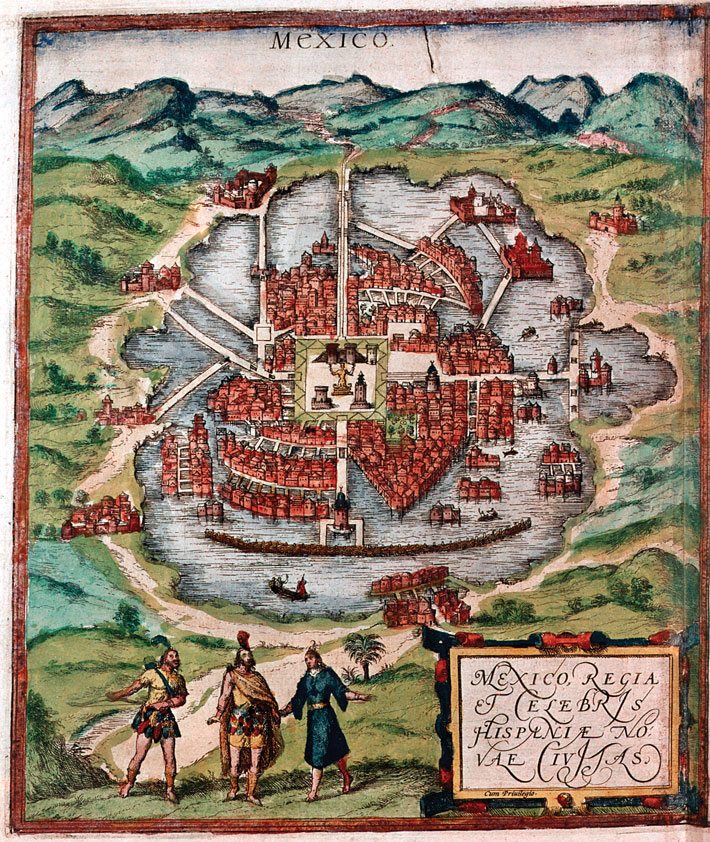by ROGER ATWOOD

In 1519, the Spanish conquistador Hernán Cortés and 400 of his men marched into the Aztec capital of Tenochtitlan and knew at once they were in a strange and wondrous place. Even before their arrival, the emperor Moctezuma II had sent the Spaniards lavish jewels and fine clothes. He may have believed the Spaniards to be the deity Quetzalcoatl, the “plumed serpent,” returning to Tenochtitlan from the east, or he may have thought he was receiving emissaries from a friendly state. According to their own accounts, as the Spaniards began to explore the city, they found temples soaked with blood and human hearts being burned in ceramic braziers. So thick was the stench of human flesh, wrote chronicler Bernal Díaz del Castillo, that the scene brought to mind a Castilian slaughterhouse.
Yet what made an even greater impression was Tenochtitlan’s bustle and press. Streets were so crowded that the Spaniards could barely fit through them. And the hubbub of the main plaza, full of shouting salesman offering everything from beans to furniture to live deer, could be heard miles away. “Among us there were soldiers who had been in many parts of the world, in Constantinople and all of Italy and Rome,” wrote Díaz. “Never had they seen a square that compared so well, so orderly and wide, and so full of people, as that one.”
Five hundred years later, Mexico City’s main plaza still teems with shoppers and street hawkers, while, only a block away, archaeologists are carefully digging up the remains of the city Cortés and his men wondered at. Today archaeology is happening everywhere in Mexico City—just off the main square, in alleys, patios, and back lots. One dig is being conducted in the basement of a tattoo parlor. Others are going on beneath the rubble of buildings destroyed in the city’s 1985 earthquake. There’s a site located in a subway station, and two others are under the floor of the Metropolitan Cathedral. When city workers repave a street, archaeologists stand by to retrieve ceramic sherds, bones, and other artifacts that appear from under the asphalt. Excavation sites are often so close to modern infrastructure that archaeologists have to take care not to undermine modern building foundations. Researchers regularly contend with a bewildering network of sewers, pipes, and subway lines. And because the Aztec capital was built on a filled-in lake bed, they often have to pump water out when these areas flood.
Archaeology for more
